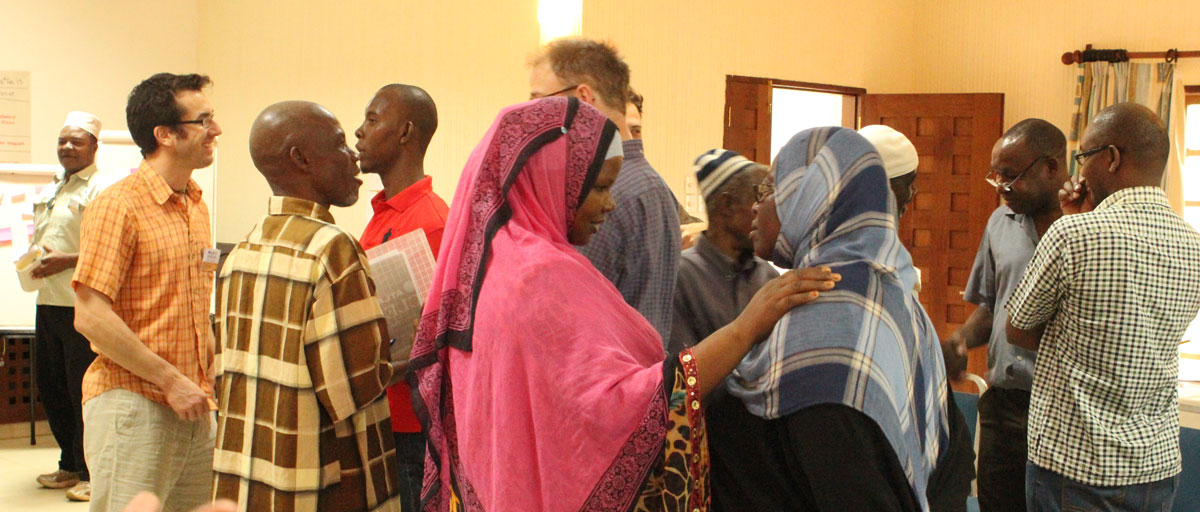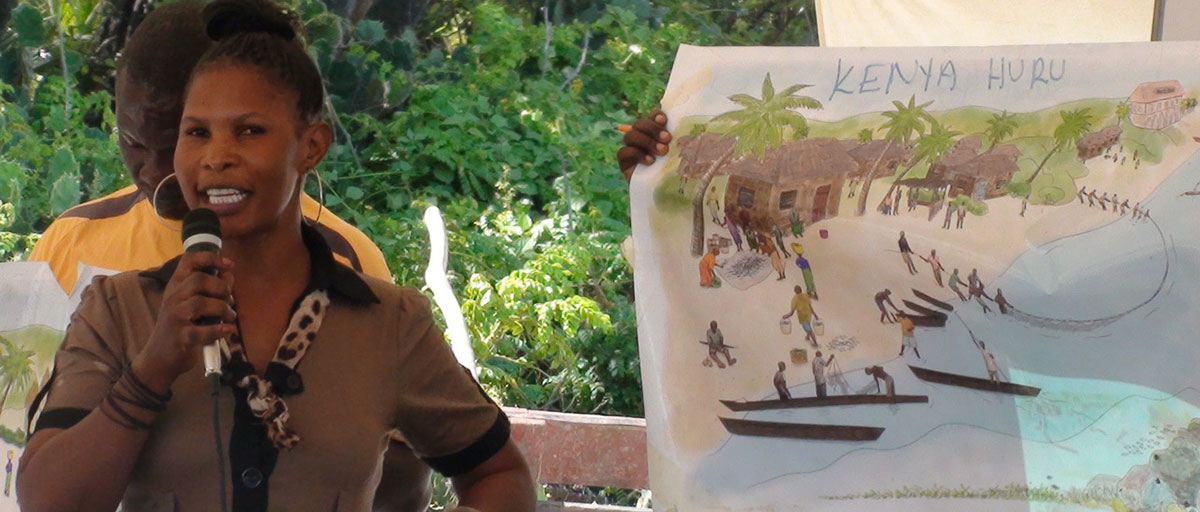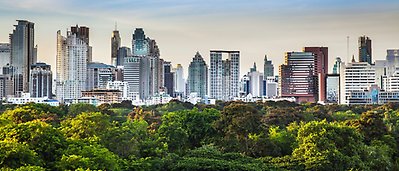
A new study in Conservation Biology, outlines an approach to ensure biodiversity conservation does not harm human needs. This picture shows many different types of people interacting and benefiting from fisheries at a landing site in Bagamoyo, Tanzania. Photo credit: S. Stacey/Worldfish
Bildtext får vara max två rader text. Hela texten ska högerjusteras om den bara ska innehålla fotobyline! Photo: B. Christensen/Azote
POVERTY ALLEVIATION AND BIODIVERSITY
Biodiversity vs. poverty alleviation, or can we have both?
New study highlights an approach for balancing poverty alleviation and biodiversity conservation efforts
- New methods paper in Conservation Biology presents an approach that safeguards basic human needs while pursuing biodiversity conservation
- Poverty is more than lack of money. People are harmed any number of basic human needs. The approach combines universal human needs with a participatory approach to account for local situations
- The study showed how different coastal ecosystems contributed to meeting these needs
Conservation and poverty alleviation often go head-to-head with one another. On the one hand, it is vitally important to protect our ecosystems and biodiversity. On the other hand, there are basic human needs such as shelter, food, clean drinking water and autonomy that are shared by all people. If we are to work towards a sustainable planet we need to find ways to meet both these objectives.
A new methods paper in Conservation Biology looked at how basic human needs could be incorporated into strategies that both help with poverty alleviation and benefit the environment. Furthermore, the paper, co-authored by centre researcher, Tim Daw, addressees the challenge of balancing conservation, and directing ecosystem-derived benefits, known as ecosystem services, towards poverty alleviation.
As Daw points out, “Any vision of sustainable development must recognize that eradicating poverty is inextricably linked to ecological integrity and vice versa. As such, it requires that all people have the resources to fulfill their needs but that humanity’s use of natural resources does not stress critical Earth system processes.”
The study was carried out through fieldwork in the Sustainable Poverty Alleviation from Coastal Ecosystem Services (SPACES) project, where Daw was the principal investigator. SPACES, was funded by the UK Ecosystem Services for Poverty Alleviation programme from 2013 to 2017. SPACES investigated how marine ecosystem services contributed to human well-being and poverty alleviation in coastal Kenya and northern Mozambique.
Our approach can help conservationists and planners better understand and monitor poverty alleviation, while pursuing biodiversity protection. This approach can help ensure that conservation measures do not cause serious harm to individuals
Tim Daw, co-author
Doing well, doing poorly
To conduct this study, the authors used the theory of human needs developed by Len Doyal and Ian Gough in 1991. It includes a list of 12 universal criteria for assessing human needs: shelter, economic security, sanitation, drinking water, food security, health, education, physical security, respect, relationships, autonomy, and participation.
Participants in the SPACES study sites in Mozambique and Kenya determined, via focus groups or household surveys, what their needs are, at what point they are met, what it means to do “well,” and what it means to do “poorly.” This information was then incorporated into a household survey to asses which needs were lacking within the community. The insights from the survey was later shared with development or conservation colleagues to improve their understanding of the problems a community faces. For example the SPACES project created an online ‘data explorer’ tool that allowed government and NGO staff to explore which needs were missed by men and women in the SPACES study sites.
The authors found that basic needs described by people in SPACES study sites were in line with Doyal and Ian Gough’s theory. They also found that what it meant to do poorly was consistent across SPACES study sites. For example, not being able to enroll their children in school was consistent across almost all study sites as an indicator of doing poorly.
However, they found that doing well varied across the SPACES study sites. In these cases, it was it individual contexts that defined what it meant to do well.
Meeting needs and context
Another insight from the study was that ecosystem services important to each study site varied. For example, the study found that fish and octopus made important contributions to meeting all needs in both Mozambique and Kenya, but that some ecosystem services were more gendered. For example women placed a greater importance on mangrove firewood for meeting educational and nutritional needs.
Daw elaborates, “Combining the importance ascribed to each good for different human needs from each focus group allowed us to explore how the surrounding environment contributed to different well-being domains.”
Finally, while the authors agree that the communities know their context best, external opinions can be good. In one case, water quality was so consistently bad that participants in the community could not imagine that it was possible to have better quality water. In cases like this, the authors suggest that expert opinions should also be considered when evaluating if needs are missed.
Work in the ‘solution space’
When it comes to biodiversity vs. poverty alleviation, there is a need to balancing both and to work in the ‘solution space’ where ecological integrity is remained, but people are not harmed by loss of basic needs.
As Daw explains, “Our approach can help conservationists and planners balance poverty alleviation and biodiversity protection and ensure conservation measures do not cause serious harm to individuals. We further argue it can be used as a basis for monitoring the impacts of conservation on multidimensional poverty.”
When trying to integrate seemingly competing interests between conservation and development, this approach can “inform the search for policy or interventions that lead to positive environmental changes that do not result in serious harm for people,” the authors conclude.
Methodology
Using SPACES study sites and taking off from the theory of human needs, the authors used a five-step process to determine if basic needs at the household level were being met, and how ecosystem services in their environment contributed to meeting these needs:
(1) Focus group with community members developed a list of human needs that was relevant to each village’s context. If a need was not captured by the theory of human needs, it was added at a later stage.
(2) In the same focus groups, the participants determined indicators for whether a household was doing “well” or “poorly” with regards to each need.
(3) In a subset of the same focus groups, the participants decided what a site-specific threshold of a need being met vs. unmet. Participants arranged the indicators in order of doing well to serious harm, and then discussed when they consider a household to be in serious harm.
(4) Using the threshold of harm from step 3, a large-scale household survey was then conducted across each SPACES study site in Mozambique and Kenya, based on the context-specific information collected in the earlier steps.
(5) A focus group from each study site then helped identify ecosystem services in their immediate environment, and how they contributed to basic needs.
Chaigneau, T., Coulthard, S., Brown, K., Daw, T.M. and Schulte‐Herbrüggen, B., 2018. Incorporating basic needs to reconcile poverty and ecosystem services. Conservation Biology
Tim Daw studies the interaction between ecological and social aspects of coastal systems, and how these contribute to human wellbeing and development.










